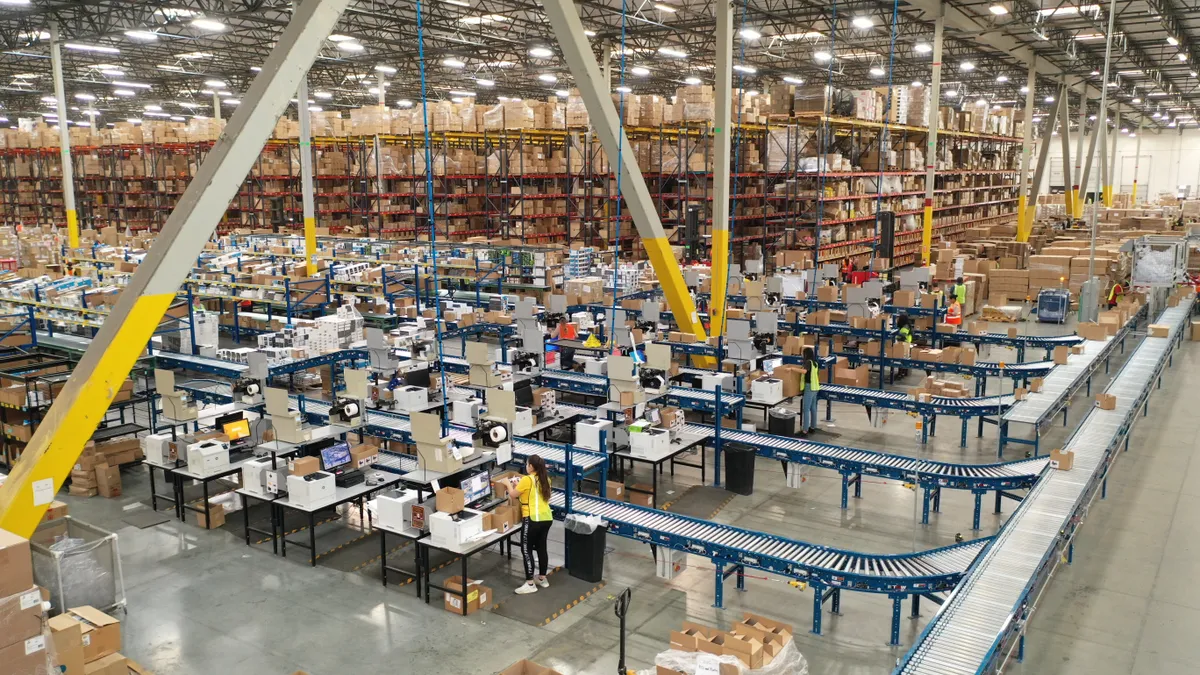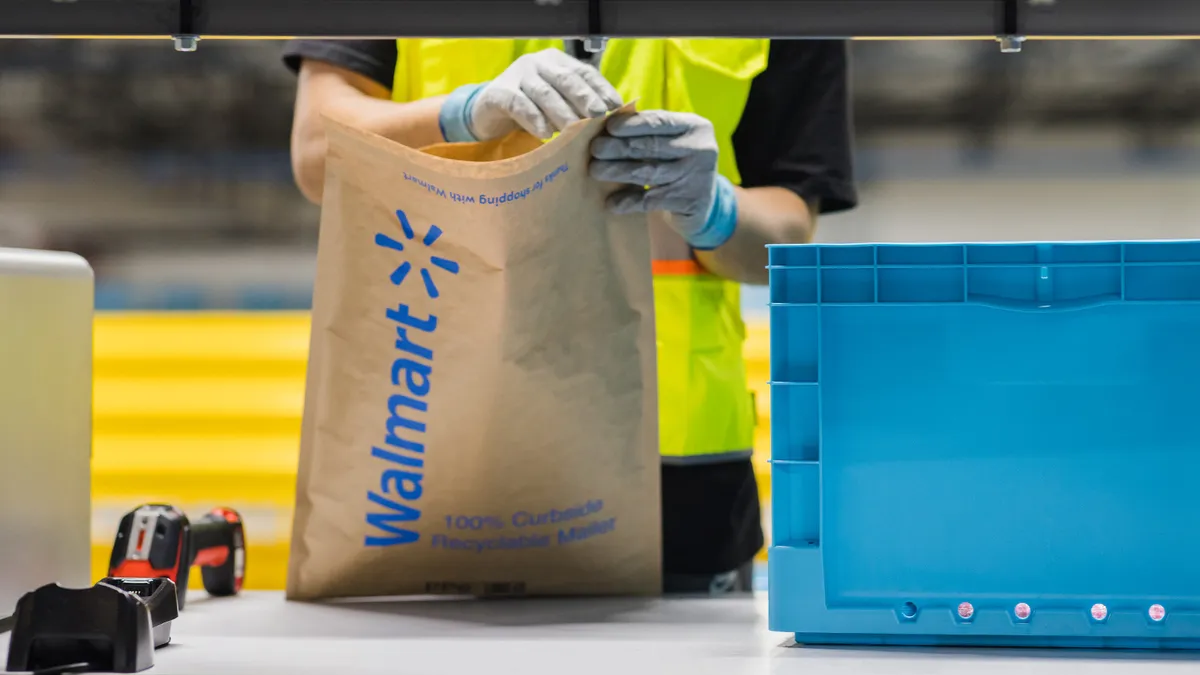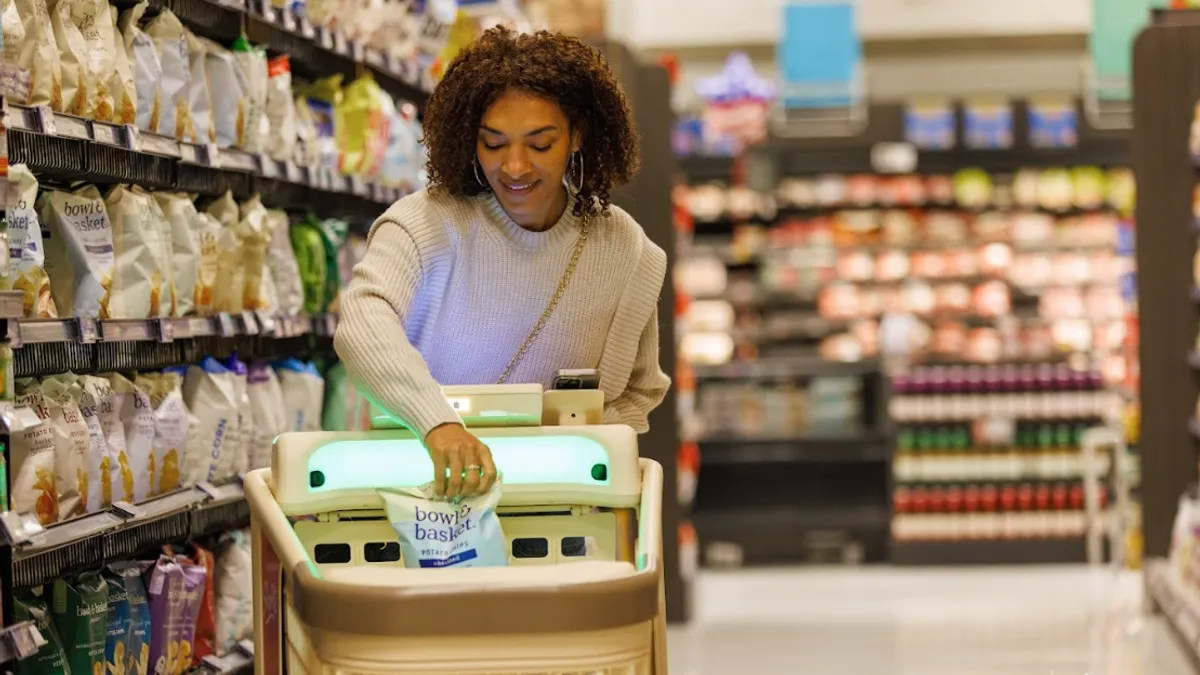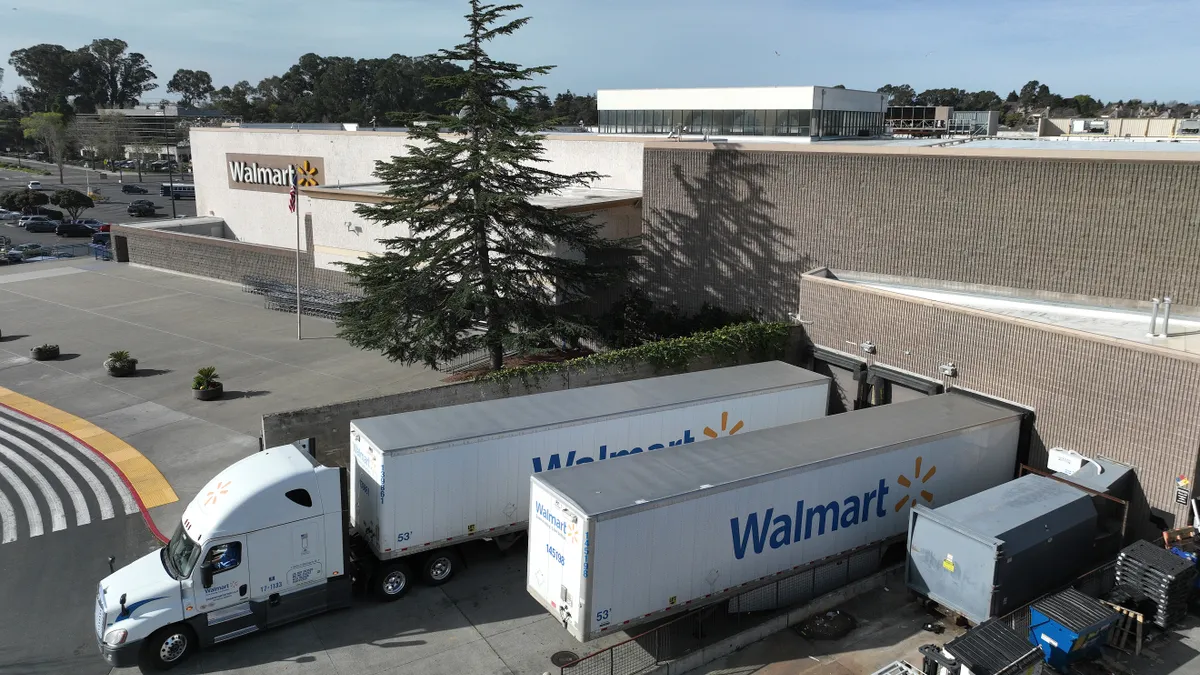Before the U.S. detected its first known case of COVID-19, e-commerce was at best a growth opportunity and at worst, a thorn in the side of many retailers.
At 16% of total retail sales in 2019, some retailers had become "disillusioned" with the cost of online sales compared to the overall margin contribution, according to CBRE managing director Joe Dunlap. But a pandemic that drove consumers around the world into their homes, cratered demand for discretionary goods and upped screen time changed the math.
The imperative for e-commerce has never been stronger, with large swaths of retail stores closed to slow the spread of COVID-19 and some state reopening plans mandating omnichannel strategies. E-commerce is now an essential insurance policy — a way to keep sales from stopping entirely. But the usual data e-commerce logisticians use to craft fulfillment networks are losing relevance in the current circumstances.
"Optimally locating your facilities is difficult," Dunlap told sister publication Supply Chain Dive, because demand may shift around the country as local restrictions change. "Trying to understand geographic demand from a distribution perspective is crazy right now," he said.
Warehouses close for many reasons in the time of coronavirus. In some cases, local authorities order them to cease operations. One Manhattan Associates client closed its warehouse (which shipped products deemed essential) amid media pressure to do so, Vice President for Professional Services Heather Mahan told Supply Chain Dive.
Collocating fulfillment capacity with historical demand or population centers may no longer be a winning strategy in the near- to medium-term.
"We've had 11 years of a bull market here. Everything's been go go go, go forward, go fast," Steve Denton, CEO of UPS-backed on-demand warehousing company Ware2Go said. According to Denton, it's time for some "preventative maintenance" for e-commerce logistics networks. But in the long term, how ready should retailers be for a disruption the size of this first wave of COVID-19? And what does a de-risked e-commerce logistics network look like post-pandemic?
"We've known about pandemics for long time. We haven't understood their effect on our business and haven't really done much to plan for them," Dunlap said. "I think going forward because of the likely wave two, wave three of COVID-19 and the next pandemic, people will probably build these into their business plans going forward."
Simple and mighty is mighty no more
The correct number of warehouses in the decade of e-commerce growth before the coronavirus was as few as possible, while meeting service goals.
"Ten years ago, two DCs for your network was a pretty common answer. If you put something shifted towards the West Coast and something shifted towards the East Coast, you can get to 80% of the volume on a one-day truckload type basis. And that's pretty efficient," Russ Kushner, senior engagement director at Manhattan Associates, told Supply Chain Dive.
Amazon's two-day and then one-day Prime service made fulfillment speed a paramount competitive advantage in e-commerce and required more warehouses to achieve faster deliveries while maintaining margins.
"Brands need to get crafty right now to survive and thrive long past our current circumstances."

Tim Hinckley
Chief Commercial Officer, Radial
For any shippers unconvinced or somehow immune to the need for speed, the coronavirus has introduced new motivations for a more complex fulfillment network.
"Single DC operations … they can look really good on paper when you're managing inventory carrying costs and a workforce and a variety of things. But somebody gets tested COVID-19 positive and boom, you're done for a while,"Glenn Gooding, president of iDrive Logistics, told Supply Chain Dive.
In the most simplistic terms possible, the more fulfillment options within a network, the less the risk the network will lose core fulfillment capacity. To compensate for that risk, unit economics may have to suffer in the near-term if they haven't already, said Gooding.
Some retailers, particularly essential retailers seeing holiday-levels of revenue during the pandemic, may be able to invest in new assets in the near term. Others, especially nonessential businesses, may seek out fulfillment contingencies within existing assets.

Some retailers, most prominently Target, discovered before the pandemic that store networks can offer fulfillment optimization opportunities too if digital infrastructure and tools are in place to route orders to them. Since non-essential retailers have had to close their doors, more retailers are warming to the idea — DSW and Levi's quickly got into gear.
"Brands need to get crafty right now to survive and thrive long past our current circumstances. One method we've seen especially useful is the use of stores as mini-fulfillment centers," Radial Chief Commercial Officer Tim Hinckley told Supply Chain Dive.
One of Manhattan Associates' clients vowed to stage a hardware kit for e-commerce shipping in every store in a fleet of hundreds going forward, just in case, Mahan said. While store fulfillment is a good option, she said, shipping from hundreds of stores may be overkill.
This may be a case, she said, where the clients' desire for uninterrupted operations superseded cost-benefit analysis. "I think pick 10% of my stores … to operate from if I have to," she said. Having the costs of such a shift modeled out before a crisis hits, along with operational readiness, is a big part of preparedness too. Getting stores ready to ship e-commerce orders can be pretty quick — up and running in a matter of days — said Mahan, but only if inventory visibility is complete and fidelity is high.
Is in-sourcing on the way out?
Ship-from-store is a helpful contingency in times of extreme disruption, but it doesn't replace a well-designed logistics network for all shippers — especially those without hundreds of stores to deputize for fulfillment. For shippers who decide a wholesale network change is a best-case scenario for the future, COVID-19 presents a quandary unlike any disaster in modern retail operations. Even the largest hurricanes have discreet areas of impact. The coronavirus abides by no such borders.
Fulfillment shifts are especially difficult for asset-heavy operators, and for the better part of the last decade retailers have been slowly taking e-commerce fulfillment in hand.
"So many companies actually initially outsourced their e-commerce fulfillment, but it added costs and many of them realized that and you moved mountains and earth to bring it back in house," Dunlap said.
Ironically, those who've built immense in-sourced networks may lack the financial flexibility to diversify, Daniel Binder, partner at Columbus Consulting, told Supply Chain Dive.
The fixed nature of owned or leased fulfillment assets amid constant change may send this trend in the opposite direction, according to Matthew White, strategist at iDrive Logistics. "I think that that sense of insecurity among companies who are running their own distribution warehouses will stick and it will create a trend that favors outsourced," he said.
Kushner added that though the lowest cost option for warehousing operations or logistics will often be to stick with one provider, either in-sourced or a single third party, having multiple partners to call on in a crisis is a plus.
Determining if the added cost of redundancy is worthwhile, Dunlap said, is a matter of costing out the potential disruption that could come from not doing so. Today, the costs of single-sourcing supply chain services may be all too apparent to those struggling with closed fulfillment assets.
"So many companies actually initially outsourced their e-commerce fulfillment, but it added costs and many of them realized that and you moved mountains and earth to bring it back in house."

Joe Dunlap
Managing Director, CBRE
On-demand warehousing players like Ware2Go, Flowspace and Flexe claim to add flexibility through redundancy to e-commerce fulfillment with about two weeks of setup time compared to months, on average, to start up with a new third-party logistics provider.
These providers offer dozens of warehouses and pay-as-you-go schemes. Paying only for the space shippers use may also be a plus in times of wildly swinging demand, Flowspace CEO Ben Eachus told Supply Chain Dive. "Renting or leasing your own warehouse space has typically been a relatively small part of someone's overall fulfillment spend. But when volume is so volatile as it is now, it actually becomes significant," he said.
"This whole situation feels like Black Friday or Cyber Monday, but it was a surprise. If you look at what happens to supply chains during peak, that's exactly what folks do — they pop up distribution in a parking lot … just enough to be able to hold more inventory for that store. So [on-demand warehousing] is absolutely viable, but that lead time to get those types of applications set up is typically longer than just turning on a store," said Mahan.
Interest in Flowspace from potential clients in the last month or so has been motivated by cost savings just as much as operational assurances, according to its CEO. "I think they're evaluating. It is obviously a very big decision to terminate a lease or something like that, but I think there's definitely interest in what other alternatives could look like," Eachus said.
True omnichannel is a necessity
No matter the changes shippers decide are needed to de-risk e-commerce logistics as the U.S. rides the COVID-19 roller coaster, two things need to be in place before anything else: liquidity and inventory.
Many e-commerce companies now won't be able to afford changes (other than shrinking) to their logistics networks. In all cases, but especially those with cash flow troubles, working with existing assets and ensuring optimum flexibility is key.
"One of those long-term things is to have that global visibility to inventory so that your entire network — whether it's a large distribution center or a store — they're all enabled as potential inventory fulfillment points," said Kushner.
Ware2Go's Denton spoke of this type of omnichannel fulfillment flexibility like a switch that retailers should be ready to turn on even if it doesn't operate every day. He also said retailers may only be able to achieve the ultimate level of fulfillment flexibility for the top 30 or so SKUs.
And it's not just a question of being able to ship from any network asset, Dunlap explained. The goal is to be ready to ship any item, any format, from nearly anywhere.
The barriers to doing so can be physical — related to inventory, training and supplies — or digital, relating to warehouse management software.
Warehouses need to be ready ship one item or 10 pallets, Dunlap said, "I still think that there are very few companies that are able to do that."



















